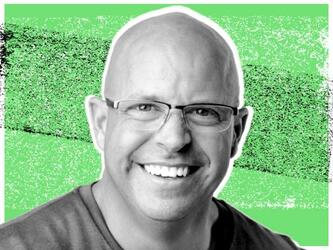Think outside the brand
Businesses want to know how they can grow their brands. This is a simple question with complex answers, answers that start with people – how they choose brands and, most importantly, how you can influence them to choose your brand more.
It all starts with how people make choices
In real life, decision-making is often more unconscious than conscious. People use what behavioural economics refers to as System 1 and System 2 thinking (where System 1 thinking is more unconscious, more intuitive and faster and System 2 thinking is more conscious, controlled and slower). This affects how people deal with brand choices. A brand exists in people’s minds as a unique set of memories, emotions, experiences, stories, images, sounds, and the like – what we call a mental network. Mental networks connect to System 1 thinking.
This brings us to the areas we can influence when people choose brands: memory salience and attention salience. Memory salience is the mental network a brand has in a person’s mind as well as the mental availability of the brand. Attention salience is the ability of the brand to capture people’s attention at the moment of choice. At the moment of brand choice, and at all points in the process, people are influenced by memory and attention salience.
Coming to mind is good. Coming to mind first is better
Our R&D indicates that:
- The order in which a brand comes to mind for consideration matters
- Consumers need a dense and relevant mental network that is linked to key occasions
- A brand needs to be noticed at the moment of truth.
We asked mobile phone users which brands they considered choosing. Over half mentioned Samsung, while only a little over 40% mentioned Apple. However, Apple had the fastest speed of mental retrieval based on the order of mentions. Comparing first mentions with market share, we see that they align very nicely.
Richer and more positive networks lead to larger market shares
Our R&D also shows that brands with richer and more positive mental networks provide more mental cues at the moment of choice and, as a result, have larger market shares. However, the number of associations is not enough; a network also needs to have many interconnected associations. The more associations and the more these associations are connected, the denser the network will be. A dense network ensures easy retrieval of the brand.
In our example, Apple has the strongest and most diverse network of associations – and the density of this network is closely linked to market share.
We have seen from similar R&D work in the US beer category that an even stronger relationship with market share can be found when these associations are related to those occasions where most of the consumption take place.
How will this help you to grow your brand?
The key takeaways for growing your brand based on these learnings are:
- Make sure consumers have a rich, positive mental network for your brand. Identify what people expect from the category and brand so you can ensure the brand experience reinforces these memory structures
- Ensure that this network of associations is related to the key needs and usage occasions to pave the way for the brand to be ranked first at the moment of choice
- Leverage your brand assets to make it easy for people to recognise your brand at all touchpoints
- Ensure your brand is available at every touchpoint, both physically and mentally. This means having the right product in the right place at the right price
In summary, brands don’t buy brands – people do. Understanding how your consumers make choices is the first step to achieving growth.
Douwe Rademaker is global CEO of Ipsos MarketQuest

We hope you enjoyed this article.
Research Live is published by MRS.
The Market Research Society (MRS) exists to promote and protect the research sector, showcasing how research delivers impact for businesses and government.
Members of MRS enjoy many benefits including tailoured policy guidance, discounts on training and conferences, and access to member-only content.
For example, there's an archive of winning case studies from over a decade of MRS Awards.
Find out more about the benefits of joining MRS here.













0 Comments